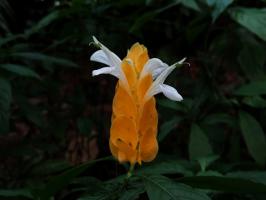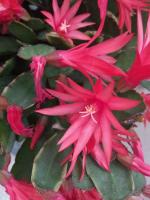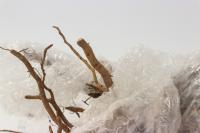1、 Curing method
1. Temperature: Safflower gentian likes to be warm. The suitable temperature range is generally between 15 and 30 degrees. Too hot will hinder its growth, so it's best to adjust it when the temperature is higher than 35 degrees. Similarly, winter should not be too cold, otherwise its growth will be hindered
2. Light: Safflower gentian likes light, and wild plants are generally distributed in places with good sunshine. If it is planted in a large area, you need to pay attention to selecting a sunny place with sufficient sunshine, and its growth trend is good. However, too strong light should also be blocked as much as possible

3. Watering: Safflower gentian likes humidity and has high requirements for air humidity. But when watering, you should also pay attention not to be too waterlogged. Choose a place that is easy to drain water for sowing, so that it will be easier to drain water during the rainy season
4. Fertilization: it doesn't need much fertilizer. Relatively speaking, base fertilizer is the most important. In addition, topdressing is mainly used during flowering and can be used as appropriate at other times

2、 Breeding skills
1. Reproduction: it can be propagated by sowing. Mainly from mid April to mid May. Before sowing, it is best to soak the seeds for 24 hours. Because its seeds are relatively small, it is not suitable for direct sowing. It's best to mix them with fine sand and sow them together. After sowing, it's best to cover it with a layer of straw. Then, it is necessary to keep the surrounding environment suitable, so that the germination probability will be relatively high
2. Weeding: Safflower gentian is generally sown in a large area, so attention should be paid to weeding in the field. Generally speaking, the number of weeding can be about twice a year. After weeding, it's best to supplement some base fertilizer

3、 Diagnosis and treatment problems
1. Disease: there may be "sudden fall disease", which is caused by fungi. The harm is relatively serious. If it is serious, it will lead to the death of plants in pieces. Mancozeb should be used for control. And "spot blight", carbendazim can be used
2. Insect pests: mainly one kind, called "mole cricket", which can be sprayed or killed by trapping

4、 Other issues
1. Toxicity: Safflower gentian is non-toxic. It is a kind of traditional Chinese medicine
2. Whether it can be raised at home: it is not an ornamental plant, but a kind of medicinal material planted in a large area


 jackfruit
jackfruit snake plant
snake plant hibiscus
hibiscus hydrangea
hydrangea lavender
lavender Green roses climb al...
Green roses climb al... If you don't pay att...
If you don't pay att... Management of four g...
Management of four g...



































